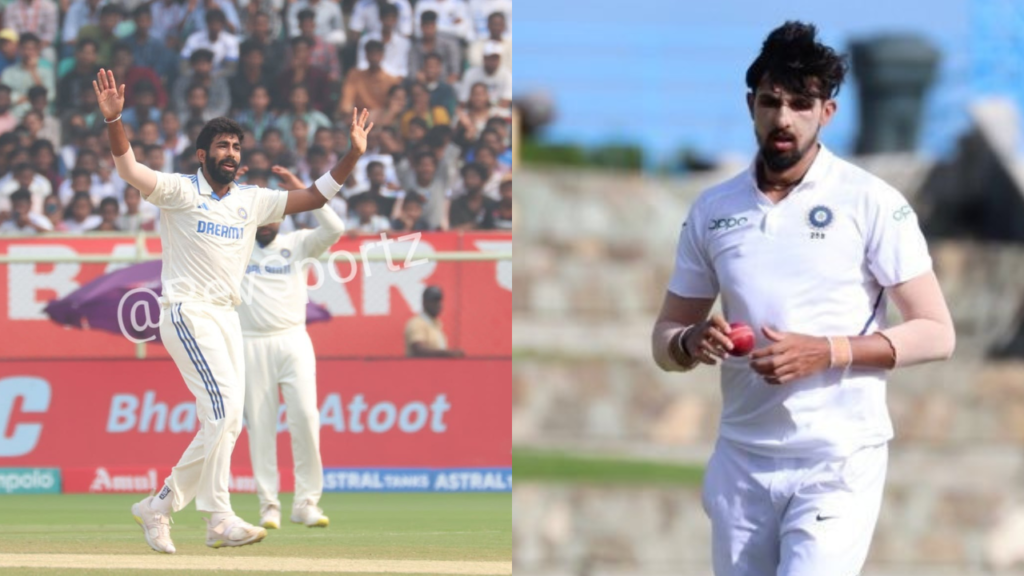
As we get ready for the Rajkot Test, there are reports in the media that Jasprit Bumrah might be rested for the fourth Test in Ranchi. It is because the selectors are concerned with the load on Bumrah, and want to ensure that his body holds up for the challenges going forward.
All of these calls are based on principles of workload management. The question is when did workload management first come into Indian cricket? How did things evolve, and how were processes put in place?
To understand this, we need to go to Bharat Arun, former bowling coach of the national team.
When we asked him to elaborate, he said something fascinating. “I first started talking about workload management when I was at the NCA,” he said. “I had read a lot on bio mechanics and I was convinced this was the right way to go about it. A fast bowler does things going against the very grain of the human body. To bowl fast for 15-20 overs a day is not something the human body is used to. As a result, you need to give the body rest to be able to do things best consistently.
Also Read: Nikhat Zareen – Rising to Stardom
“If you don’t, you will end up over-exerting and that might cause injury and stress. We had done a detailed study and had presented our findings to Sanjay Jagdale, the Secretary of the BCCI. Jagdale, I have to say, was very enthusiastic and had bought into our theory. He had offered full support and asked us to go ahead and implement the plan. However, he left in a few months and the project turned a non-starter. While at the NCA, we realised that it was very difficult to get every stakeholder in the BCCI to agree and come on the same platform. And unless everyone agreed, you will never get a sign off on a project like this.
“Things changed when I was appointed the bowling coach of the national team. Ravi [Shastri] was the head coach, and when we presented our plan to Ravi and requested his support, it all started to fall in place. Ravi was convinced and said to us clearly that, as coaches of the Indian national team, it was upon us to chart out a roadmap for Indian cricket. No bureaucracy could delay things and we were empowered to take decisions. He also reminded us that with power came accountability. Whatever we did, we needed to be accountable for our actions, for they could impact the future of Indian cricket.
“I remember going up to Ishant [Sharma] and telling him that, for years, he had followed what he believed in. All I wanted him to do was follow me for a few days. If things did not work out, he could very well go back to doing what he knew best. Ishant could see it wasn’t an imposition. Rather, it was a sensible request and he found no reason to not try out what we were suggesting. Within a few days, he had bought into the idea. He came up to me and said he was feeling a lot more fresh and energetic going into matches if he hadn’t bowled much on the previous day.
“It was a big breakthrough to have your senior bowler agree to what you had been envisaging for a while. Within months, each of the bowlers had agreed to workload management and, now if you go and ask each one of them, they will tell you it is their bible.”
For more sports related information click here- https://revsportz.in/
There was both pride and satisfaction in Arun’s voice, and every reason for him to feel vindicated. But after a brief pause, Arun resumed talking of the challenges involved. “You should ask Ishant this sometime,” he said. “He was one of those bowlers who bowled a lot on the eve of the game. The day before the game, he would be in the nets early and bowl a lot of overs to be in rhythm. And he had reason to believe this was the best approach.
“Someone like a Wasim Akram, for example, will say the more you bowl, the better it is. And when a legend like Wasim says so, you listen. Most bowlers will do so. In fact, if I say anything to the contrary, it will be like: here is Wasim Akram telling you to do something, and here is Bharat Arun asking you to do things differently. Who will you listen to? The answer, we all know, is a no-brainer! So, when Ishant bought into the idea, a start was made and thereafter, things fell in place.”
Also Read: Celebrating GR Viswanath, Hero of Yesteryear, as he Turns 75



